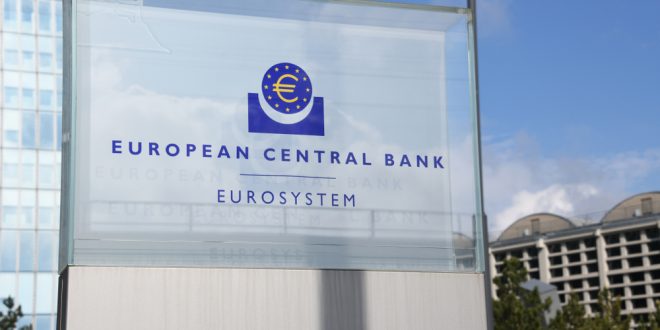money markets expect the ECB to raise rates by 75 bps – the main lending rate from 0.50% to 1.25% and the deposit rate from 0% to 0.75%. In such a scenario – which is the most likely one – the focus will swiftly shift to the next factors.
If the bank is wary of the energy crisis and raises rates by only 50 bps, the euro would tumble down, and the other factors would do little to change this downward path. It would be hard to believe any hawkish promises from policymakers if the bank fails to deliver on expectations.
The European Central Bank is expected to frontload a series of rate hikes and sacrifice growth in the area due to the rising cost of living, which is threatening to surge even higher.
Following the Fed’s Jackson Hole Symposium and a record high annualized inflation of 9.1% for the Eurozone last month, markets priced in an 80% probability of a 75 bps increment in September. Top ECB policymakers also joined the Fed’s chorus of going in for an outsized rate hike to control raging inflation.
The recent halt of gas deliveries to Europe via the Nord Stream 1 pipeline has not only pushed stocks lower and increased the risk of a recession in Europe, it’s also pushed Italian government 10-year yields to 4% — the highest level since mid-June before the ECB announced the creation of an anti-fragmentation tool. High yields for Italy — much higher than those in Germany — mean the government in Rome has to pay more to borrow, exacerbating concerns over its hefty debt pile.
Inflation in the eurozone hit 9.7% in August, and with the continued pressure on energy prices, it’s expected to reach double-digit levels in the coming months. At the same time, the risk of a recession is looming large over the region’s economy as consumers feel the pain and scale back their consumption, and companies struggle with high energy prices.
Because of the inflation outlook, the ECB is expected to sacrifice growth to keep inflation expectations anchored, as this is the bank’s core mandate.
High energy prices propagate to other areas – but also leave less money in consumers’ pockets. Gazprom’s latest decision to leave the Nord Stream pipeline shut for longer added to the angst. While gas depots are nearly full in Europe, current storage capabilities are insufficient to pass the winter without any cut in demand – and that would be painful for Europe’s largest economy.
Germany is not only dependent on gas to heat homes, but also to keep its industry humming along. The chemicals, steel and glass sectors are energy hungry. Restricting supplies to them could cause significant economic pain, on top of high bills. In turn, that would leave less money in consumers’ pockets, easing price pressures and bringing inflation down.
In such a scenario, the ECB would unnecessarily add to economic pain. That is the bank’s dilemma.
75 bps rate hike by the ECB could come as a surprise and offer a temporary respite to EUR/USD, as such a move is not fully priced in yet. The pair could recover the parity mark on a super-sized rate increase. However, the renewed upside in the euro will likely remain short-lived amid the dire Eurozone economic outlook.
If the ECB projects a recession in early 2023, it could take the wind out of the EUR/USD recovery, smashing the price back towards the two-decade lows. The previous forecasts showed that the bank expected a 2.1% growth this year but is likely to be revised downward this time.
Meanwhile, a 50 bps rate hike could question the central bank’s commitment to fighting inflation. It could also highlight the ECB’s concerns about the risks of a deep recession. In such a case, the pair could extend the downtrend towards 0.9700, as it would widen the Fed-ECB monetary policy divergence. Currently, the Fed Funds futures imply a 75% chance of a 75 bps Fed hike in September.
The ECB is set to announce its decision on monetary policy on Thursday, September 8 at 12:15 GMT. As we get closer to the release time, here are the expectations forecast by the economists and researchers of 4 major banks.
SocGen
“Until recently, we would not have believed in an outsized 75 bps ECB hike given the risks to the growth outlook, even though we think the ECB has reacted too slowly so far. However, with high inflation now lingering for longer, risking a more problematic wage-price spiral, and, importantly, with markets pricing in close to a 75 bps hike, the focus is rather on the risks of not raising by 75 bps, with the currency impact an important aspect. We thus think there is an urgency to reach a more neutral policy stance. Given the threat to the ECB’s credibility, we also wonder why quantitative tightening (QT) is not discussed. As we argued in the past, not using QT should imply higher rate hikes. The greatest risk of raising rates by 75 bps now is that the ECB may need to trigger the TPI soon. This, along with an uncertain growth outlook and a low neutral rate (1%), will be stressed by the doves who might put up more of a fight than in July (also as there is no TPI to compromise on). We expect rate hikes of 75 bps, 50 bps and 25 bps in the forthcoming meetings this year, taking the deposit rate into neutral territory as the economy slows, and another three 25 bps hikes next year. With high uncertainty over how effective rate hikes will be in a landscape of high excess liquidity, QT will need to be considered soon, unless a deeper slowdown in activity intervenes.”
Rabobank
“The ECB is hard-pressed to demonstrate determination to achieve its price stability objective. The macroeconomic projections will show a weaker growth outlook, but the ECB is clearly willing to risk a slowdown as inflation could -again- turn out to stay higher for longer. Inflation expectations are at risk of de-anchoring, and a weak EUR adds to price pressures. Markets price roughly 67 bp of hikes currently, and the ECB cannot underdeliver if it wants to show commitment to bring inflation back to 2%. We now expect a 75 bps rate hike, but risk of 50 bps remains significant. Lagarde will stress that this is not a precursor to more 75 bps moves.”
Commerzbank
“We expect 75 bps. Admittedly, 50 bps can by no means be ruled out either; after all, many supporters of a fundamentally loose monetary policy (‘doves’) have not spoken out recently. But 75 bps is also supported by the fact that the inflation rate for August rose again and was well above expectations. However, the ECB is unlikely to raise rates by another 75 basis points after next week’s meeting since they are nearing the neutral rate. Rather, we expect 50 basis points for the October meeting and 25 basis points each for December and February 2023. At the beginning of 2023, the deposit rate would be 1.75%.”
Nomura
“We now expect a 75 bps increase in policy rates. Continued upside surprises to price data since the last meeting, markedly elevated core and supercore inflation, as well as continued concerns over a de-anchoring of inflation expectations, will force the hand of the ECB Governing Council to tighten more aggressively in the near term. We have made other adjustments to our forecast profile and now see 50 bps hikes in both October and December, 2% peak rates by February, and cuts from September 2023.”
 Noor Trends News, Technical Analysis, Educational Tools and Recommendations
Noor Trends News, Technical Analysis, Educational Tools and Recommendations





